10th Century - Tumblr Posts

Fellas, fellas, is it gay to tell the homies you "promise to be their man" and then share a kiss? 🤔
Edit: next page just has the line "I am a loser only because of my loyalty to you." 😭😭😭 this is some romantic drama shit 😭😭😭

Mikula Selianovič zo série Bohatier Autor - Martin Plsko









Miscellaneous Hungarian archaeological items from the migration era, from the Urals to the Carpathians 9th-10th C. CE. Sources can be found on my blog, link at bottom.
The Magyars, as a nation, seem to have originated in the region of the Urals and Volga and their original territory covered a large amount of what is European Russia today. This region was known as Magna Hungaria or Ancient Hungary in the Middle Ages. In the 13th century Christian monks tried unsuccessfully to convert the Pagan inhabitants of Ancient Hungary, who they noted spoke the same language as the Hungarians in the Carpathian Basin (will post more on this later). Now genetics show they were related too. Some of the Hungarians in the Carpathian region were found to be direct family members of these Uralic-based Hungarians according to this genetic study below. I grabbed some highlights of genetics article here and included some archaeological image finds:
"Two recent articles have investigated the Y-haplogroup variability of Hungarian conquerors describing the conqueror’s elite population as heterogenous, with significant proportion of European, Finno-Permic, Caucasian and Siberian (or East Eurasian) paternal lineages. Fóthi et al. have claimed that the Hungarian conquerors originated from three distant sources: Inner Asia (Lake Baikal – Altai Mountains), Western Siberia – Southern Urals (Finno-Ugric peoples) and the Black Sea – Northern Caucasus (Northern Caucasian Turks, Alans, and Eastern Europeans). Both studies pointed out the presence of the Y-haplogroup N-Z1936 (also known as N3a4-Z1936 under N-Tat/M46), which is frequent among Finno-Ugric speaking peoples.
...The genetic connection of Uyelgi cemetery in the Trans-Ural and 10th century Hungarian conquerors in the Carpathian Basin is supposed by close maternal relationships of the following individuals: Uyelgi3 from Kurgan 28 of the youngest horizon and three Hungarian conquerors from Karos II cemetery have identical U4d2 mitogenome haplotype (Supplementary Fig. S4p). Furthermore, the mtDNA A12a lineage of Hconq3 (30-40 years old woman from Harta cemetery dated to the first half of 10th century AD) is an ancestor of the mtDNA lineage of Uyelgi7 (from Kurgan 30 of the youngest horizon of the cemetery) based on the A12a haplogroup tree (see Supplementary Fig. S4a).
The mentioned graves from Uylegi show the characteristic of the Srostki culture, where the gilt silver mounts with plant ornaments were typical, and which was disseminated from the Siberian Minusinsk Depression and the Altai region through the Baraba Steppe and North-Kazakhstan to the Trans-Ural region (Fig. 1).
The connection of Uyelgi cemetery and Hungarian conquerors is visible on the N1a1a1a1a branch of the tree of haplogroup N1a1 too, that was prevalent among the ancient Hungarians (Fig. 5). Here seven Hungarian conqueror samples from cemeteries Kenézlő-Fazekaszug, Orosháza-Görbicstanya and Karos-Eperjesszög clustered together on one branch, while the five Uyelgi samples from the earliest and latest horizons are located together next to this branch.
Majority of Uyelgi males belonged to Y chromosome haplogroup N, and according to combined STR, SNP and Network analyses they belong to the same subclade within N-M46 (also known as N-tat and N1a1-M46 in ISOGG 14.255). N-M46 nowadays is a geographically widely distributed paternal lineage from East of Siberia to Scandinavia. One of its subclades is N-Z1936 (also known as N3a4 and N1a1a1a1a2 in ISOGG 14.255), which is prominent among Uralic speaking populations, probably originated from the Ural region as well and mainly distributed from the West of Ural Mountains to Scandinavia (Finland). Seven samples of Uyelgi site most probably belong to N-Y24365 (also known as N-B545 and N1a1a1a1a2a1c2 in ISOGG 14.255) under N-Z1936, a specific subclade that can be found almost exclusively in todays’ Tatarstan, Bashkortostan and Hungary (ISOGG, Yfull)."
-Early Medieval Genetic Data from Ural Region Evaluated in the Light of Archaeological Evidence of Ancient Hungarians

Fanfiction
Prequelová momentka zo života Rurikovcov, staršia generácia.

Svjatoslav I, knieža z rodu Rurikovcov s Perunovou sekerkou v pozadí, jedna z hlavných postáv série Bohatier Autor - Martina "Agama" Zrostlíková
Kyjevskí hromotĺci - I

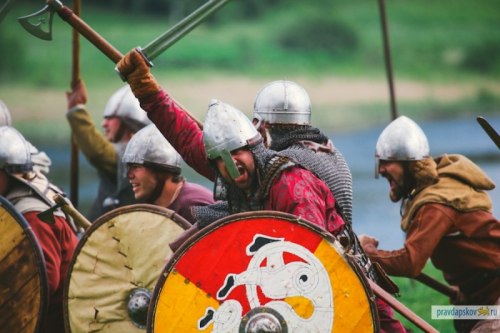
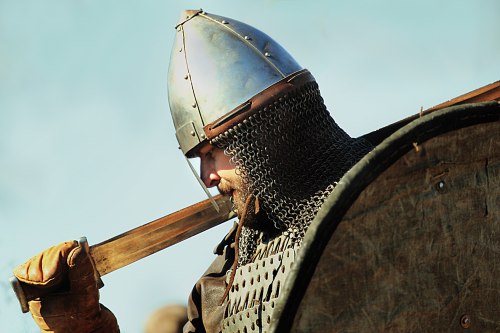
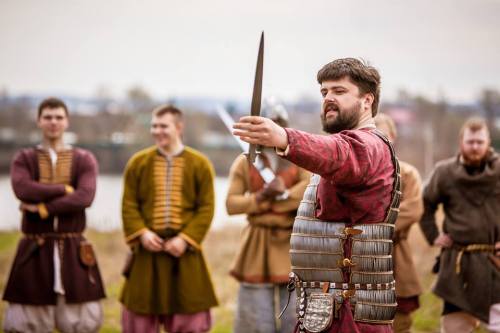
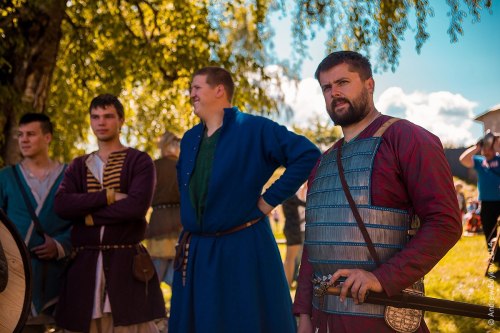
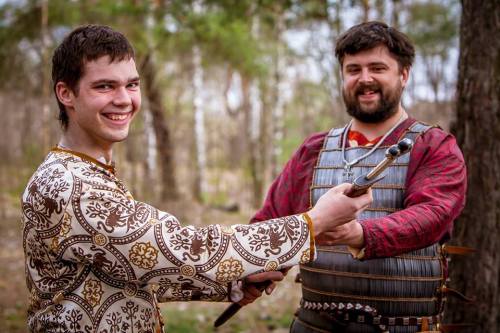
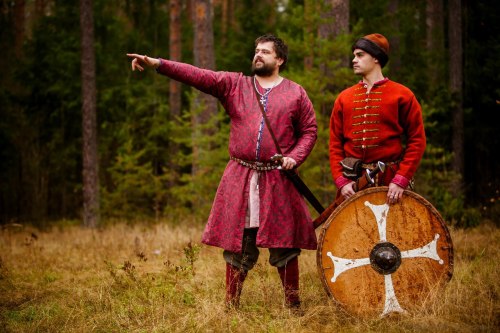
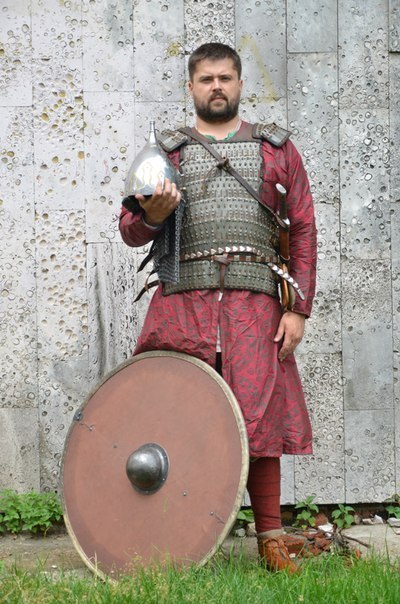
Zdroj - https://sagy.vikingove.cz/en/inspiration-4-a-retainer-from-kyiv/

#inktober day 30: A Varangian Guard. ‘Varangian’ was the name used by the Greeks, Russians and others of the eastern Mediterranean and Middle East to describe the vikings who, in the 10th century, migrated east and south from Sweden and Finland to dominate areas such as modern day Belarus, the Ukraine and western Russia (collectively known then as Kievan Rus).
They are best known for the Varangian Guard, mercenaries who were retained as the elite household bodyguard of the Byzantine Emperor, acting in the same capacity as Anglo-Saxon and Danish 'housecarls’ in Western Europe.
After The Battle of Hastings many exiled and dispossessed english warriors journeyed to the region in search of riches and new masters to serve, and many ended up in the Varangian Guard.
Inks on A5 watercolour paper, no pencils. Available for sale for just £25 (free postage in the UK, folk elsewhere will need to add a couple of quid for shipping)
#ink #inks #inking #inktober2018 #viking #rusviking #kievanrus #varangian #varangianguard #byzantium #warrior #history #militaryhistory #middleages #medieval #illustration #sketch #mattsoffe https://www.instagram.com/p/BpkokcdHugx/?utm_source=ig_tumblr_share&igshid=1inpi94wz1n7g
Niečo z Roganových čias. Respektíve na samom konci jeho času, ale ono sa to v tom ranom stredoveku až tak prudko nemenilo.
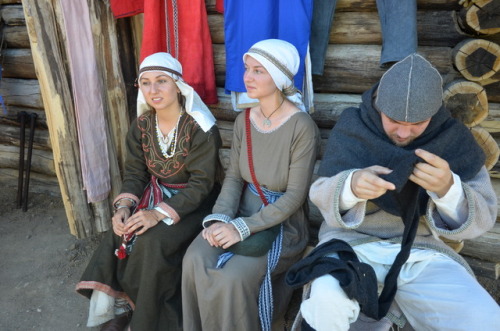
Great Moravia, c. 10th century. Festival in Archeopark Nitra, Slovakia.
Photo source: archeol.sav.sk
Fanfiction
Tretia a štvrtá časť Bohatiera sú z veľkej časti o tom, že Koščej tají, čo vlastne robí, keď sa po nociach vytráca kamsi preč. A niekto sa zamyslel, ako by mohol reagovať knieža Svjatoslav, keby na to počas chazarského ťaženia prišiel.
Two of my living history kits, or two versions of one kit, finally coming together. This is my high status kit focusing on Kievan Rus in the later 10th to early 11th century. The territory of Kievan Rus encompassed the areas of modern day Ukraine, Belarus and western Russia; and the society was culturally a mix of Slavic and eastern Scandinavian peoples with notable Byzantine influences on the upper social strata.
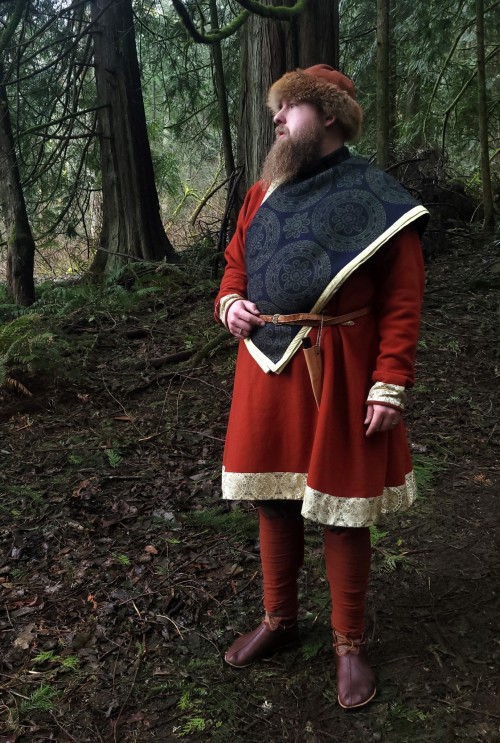

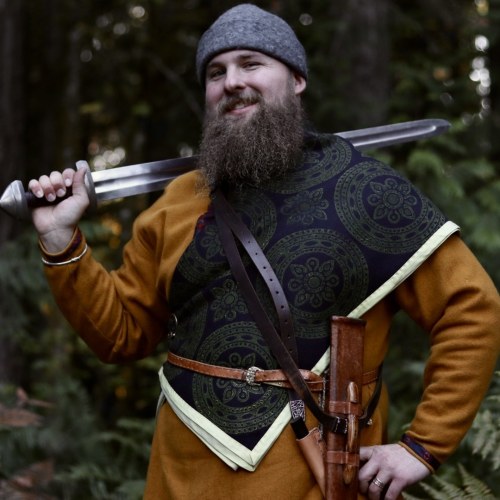
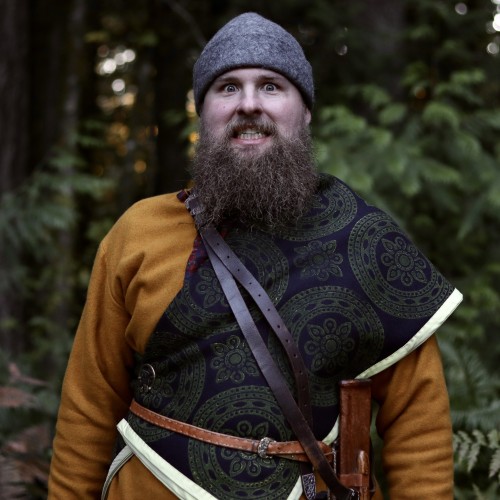
(The fourth photo featuring my impression of one of the carved faces on the Oseberg cart) 😅




WOMEN’S HISTORY † ÆTHELFLÆD, LADY OF THE MERCIANS (c. 870 – 12 June 918)
Æthelflæd was the eldest daughter of Alfred the Great and Ealhswith of the Gaini. Her maternal grandmother, Eadburh, was a member of the Mercian royal family, who according to the chronicler Asser was descended from Coenwulf of Mercia, though Asser did not specify if she was a descendant of his son or his daughter. At some point before 887, Æthelflæd married Æthelred, Lord of the Mercians, who was much older than Æthelflæd, though not it’s not certain by how much. They had only one known child, a daughter named Ælfwynn. As the rulers of Mercia, Æthelflæd and Æthelred fortified the town of Worcester, supported scholars, patronized religious orders, and warded off Viking attacks. Æthelred died in 911 and afterwards, Æthelflæd took the title “Lady of the Mercians” or Myrcna hlædige in Old English. Æthelflæd’s high status was high unusual in Anglo-Saxon society; Anglo-Saxon women seldom played much of a political role, including Æthelflæd’s own mother. As Lady of the Mercians, Æthelflæd acted as a war leader, defending her lands against Viking attacks as her brother, Éadweard the Elder, did as the ruler of Wessex. In 917, Æthelflæd famously led an army that captured Derby from the Norse and she also captured Leicester in 918. Æthelflæd died 12 June 918 and was buried in St Oswald’s Minster in Gloucester beside her husband. Her daughter, Ælfwynn, ruled Mercia for a few months after her mother’s death before being deposed by her uncle, Éadweard. It is uncertain what happened to Ælfwynn after her deposition, though it was possible she became a nun or married Æthelstan Half-King. Æthelflæd was much-admired by the later medieval chroniclers, John of Worcester, William of Malmesbury, and Henry of Huntingdon, who wrote of her in glowing terms for her defense of Christendom against the Vikings.